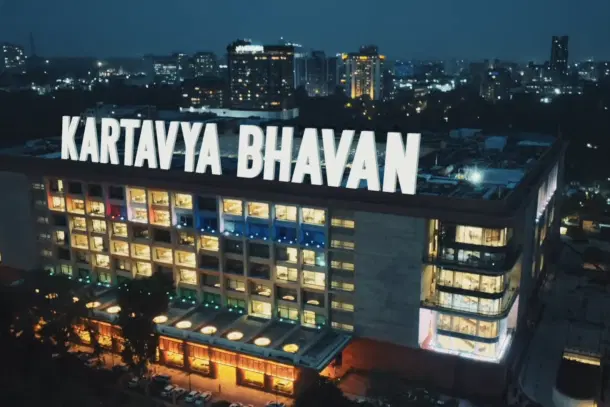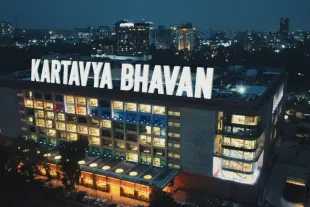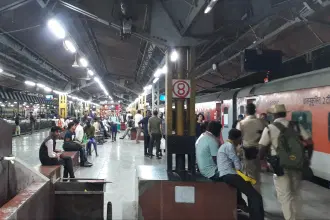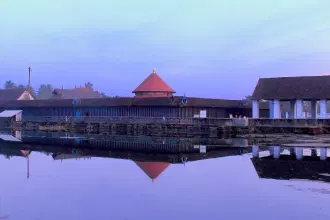News Brief
PM Modi Inaugurates Kartavya Bhavan-3, Smart Eco-Friendly Complex To House Home, External Affairs, Oil And Other Ministries—All About It
Swarajya Staff
Aug 06, 2025, 01:08 PM | Updated 01:08 PM IST
Save & read from anywhere!
Bookmark stories for easy access on any device or the Swarajya app.


Prime Minister Narendra Modi inaugurated the Kartavya Bhavan at Kartavya Path in New Delhi on Wednesday (6 August).
Kartavya Bhavan-3, which is being inaugurated, is part of the broader transformation of the Central Vista.
It is the first among several upcoming Common Central Secretariat buildings that aim to streamline administrative processes and enable agile governance.
By co-locating Ministries and adopting cutting-edge infrastructure, the Common Central Secretariat project, part of the government’s broader administrative reform agenda, will improve inter-ministerial coordination, accelerate policy execution, and foster a responsive administrative ecosystem.
At present, many key Ministries function from aging buildings like Shastri Bhawan, Krishi Bhawan, Udyog Bhawan, and Nirman Bhawan, constructed between the 1950s and 1970s, which are now structurally outdated and inefficient.
The new facilities will reduce repair and maintenance costs, boost productivity, improve employee well-being, and enhance overall service delivery.
Kartavya Bhavan-3 has been designed to foster efficiency, innovation, and collaboration by bringing together various ministries and departments currently scattered across Delhi.
It will be a state-of-the-art office complex spanning an area of around 1.5 lakh square meters across two basements and seven levels (Ground + six floors).
It will house offices of the ministries/departments of Home Affairs, External Affairs, Rural Development, MSME, DoPT, Petroleum and Natural Gas, and the Principal Scientific Adviser (PSA).
The new building will exemplify modern governance infrastructure featuring IT-ready and secure workspaces, ID card-based access controls, integrated electronic surveillance, and a centralised command system.
It will also lead in sustainability, targeting a GRIHA-4 rating with double-glazed façades, rooftop solar, solar water heating, advanced HVAC (Heating, Ventilation, and Air Conditioning) systems, and rainwater harvesting.
The facility will promote eco-consciousness through zero-discharge waste management, in-house solid waste processing, e-vehicle charging stations, and extensive use of recycled construction material.
As a zero-discharge campus, Kartavya Bhavan treats and reuses wastewater to meet a major chunk of water needs.
The building uses recycled construction and demolition waste in masonry and paving blocks, lightweight dry partitions to reduce topsoil use and structural load, and features an in-house solid waste management system.
The building is designed to use 30 per cent less energy and has special glass windows to keep the building cool and reduce outside noise.
Energy-saving LED lights, sensors that switch off lights when not needed, smart lifts that save power, and an advanced system to manage electricity use will all help save energy.
Solar panels on the roof of Kartavya Bhavan-3 will generate over 5.34 lakh units of electricity every year and the solar water heaters will meet more than a quarter of the daily hot water need.
Further, keeping in view the rising use of EVs, charging stations for electric vehicles are also provided in the building.





